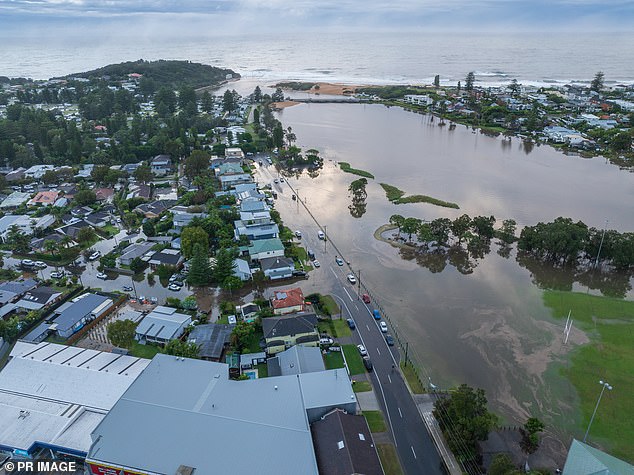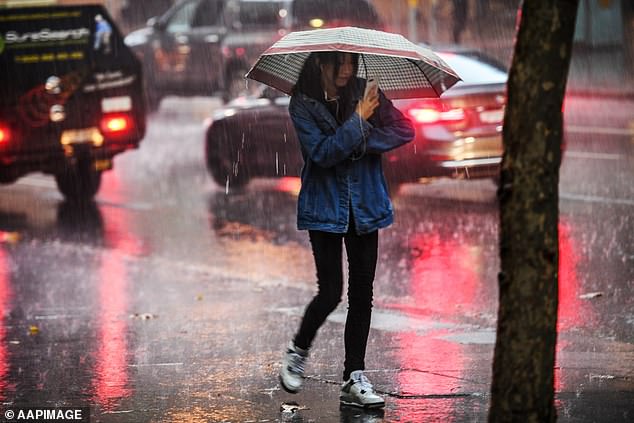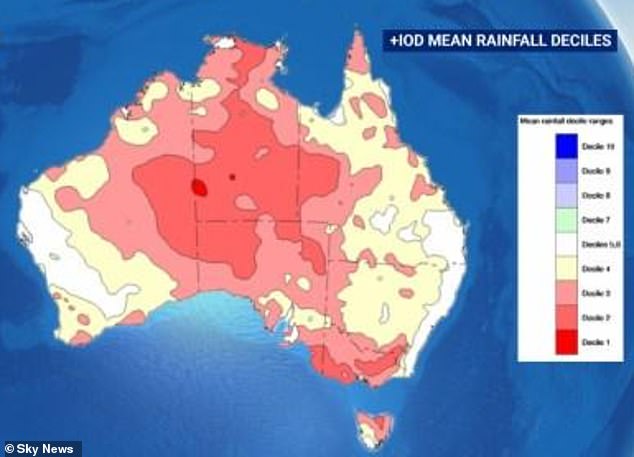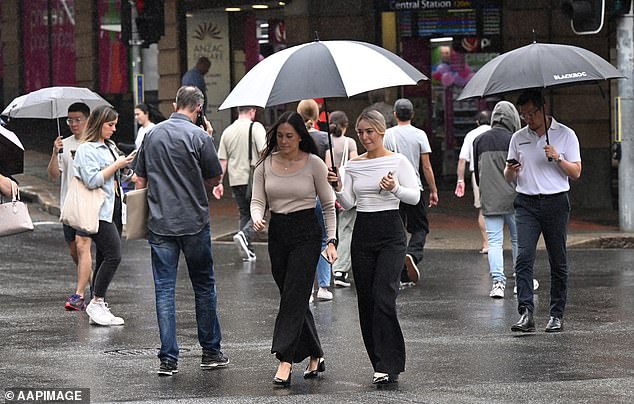Australians have been warned that La Nina could return and bring abundant rain, dealing a further blow to the country after it experienced one of its wettest starts to the year.
Sky News Australia meteorologist Rob Sharpe predicted there is a very high probability of a “dramatic change” in La Nina conditions in the coming months.
Eastern Australia recorded its wettest December-March period since 2010 after 24 percent more rain than normal fell in the region.
Mr Sharpe’s forecast predicts even more rain is on the way.
“If La Niña develops, it will likely bring wetter than usual weather across much of Australia, particularly in the tropics and central and southeastern inland regions,” he said.
La Nina predicted to bring even more wet weather to Australia
According to Sharpe, western and southern Australia will likely escape the worst of La Niña.
The Bureau of Meteorology has officially declared that El Niño has ended and ocean and atmospheric conditions have returned to normal.
This neutral climate phase should result in drier weather over the next few months, before a change brought about by the arrival of La Niña.
La Niña occurs when the equatorial trade winds become stronger, changing ocean surface currents, drawing cooler deep water from the depths of the ocean.
They generally occur every three to five years, but may occur for several consecutive years.
Typically, La Niña causes a shift in precipitation patterns toward Southeast Asia and Australia and a strengthening of equatorial easterly winds.
This results in increased rainfall across most of Australia and areas south of the tropics experiencing cooler daytime temperatures, as well as more tropical cyclones and an earlier start to the monsoon season.
Other meteorological agencies have also predicted the possibility of a La Niña episode.
Last week, the National Oceanic and Atmospheric Administration stated that the chances of a La Niña occurring are about 85 percent.

The arrival of La Niña will cause an increase in rainfall in much of Australia

The Bureau of Meteorology also warns that another La Niña could be on the way in the coming months.
There are concerns that the next La Nina episode will bring wilder weather after months of heavy rains that have already caused flooding and massive power outages.
Earlier this month, the eastern states were hit by a black Northeast storm, a rare mega-rain bomb that brought high winds and flash flooding on April 5.
This caused some areas to be flooded with a month’s worth of rainfall in a single day.
Heavy rain and strong winds also caused chaos at airports, roads and rail networks.
More than 100 flights in and out of Sydney’s domestic and international airports were canceled due to the extreme weather.
Devastating flooding led to mass evacuation orders, with more than 150 people having to be rescued from rising waters in New South Wales.
At the height of the fierce weather, the New South Wales State Emergency Service received 4,128 calls for assistance in just 24 hours.
Epic flooding tragically led to the death of a 71-year-old man in southeast Queensland.
The man drowned when his vehicle was swept away by floodwaters south of Brisbane.

The Bureau of Meteorology has officially declared that El Niño has ended and ocean and atmospheric conditions are returning to normal.
Other drivers were rescued in another incident in the same area. The weather phenomenon caused record rainfall in Queensland.
On April 7, the northern Brisbane suburb of Burpengary received 133mm of rain in just one hour and the storm dumped 153mm at Greenbank, southeast of Brisbane.
One person has been rescued from a sinking vehicle in floodwaters near Caboolture. The driver was helped by paramedics, but refused medical treatment.
Torrential rain also caused widespread flash flooding in Victoria earlier this month, leading to road closures across the state.
A woman in Daylesford miraculously escaped after falling into a flooded stormwater drain on April 1.
She was swept away by furious water that rose up to her neck. She managed to grab onto a pole before climbing out of the drain.
The Victorian SES received more than 500 emergency calls on April 1, responding to 113 flooding of homes and businesses and 260 damaged buildings.
More than 2,000 homes in eastern Victoria suffered power outages.
The wild weather came after Australia experienced one of its wettest periods between December and March.
In December 2023, an “unprecedented” cyclonic storm hit southeast Queensland on Christmas and Boxing Day, bringing torrential rain, damaging winds and thunderstorms.
The severe storms killed 10 people, including nine-year-old Mia Holland-McCormack, who died on Boxing Day after being swept into a drain by flood waters in Rochedale South, southeast of Brisbane.
Victims also included Brisbane Rugby identity David ‘Mario’ Logan and schoolteacher Stephen ‘Taity’ Tait, who died after a boat with 11 people on board capsized near Green Island in Moreton Bay around 5:30 pm Boxing Day.

